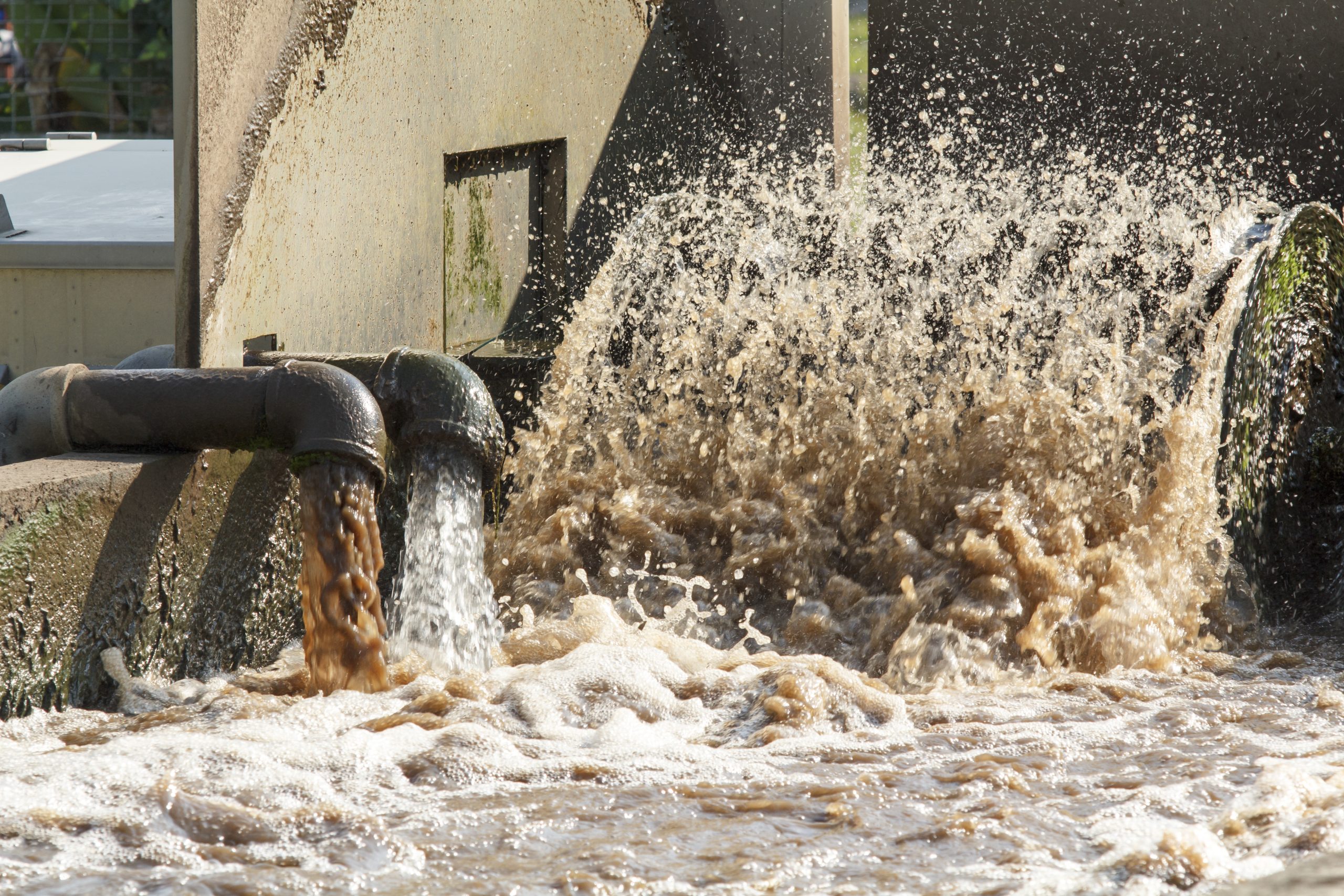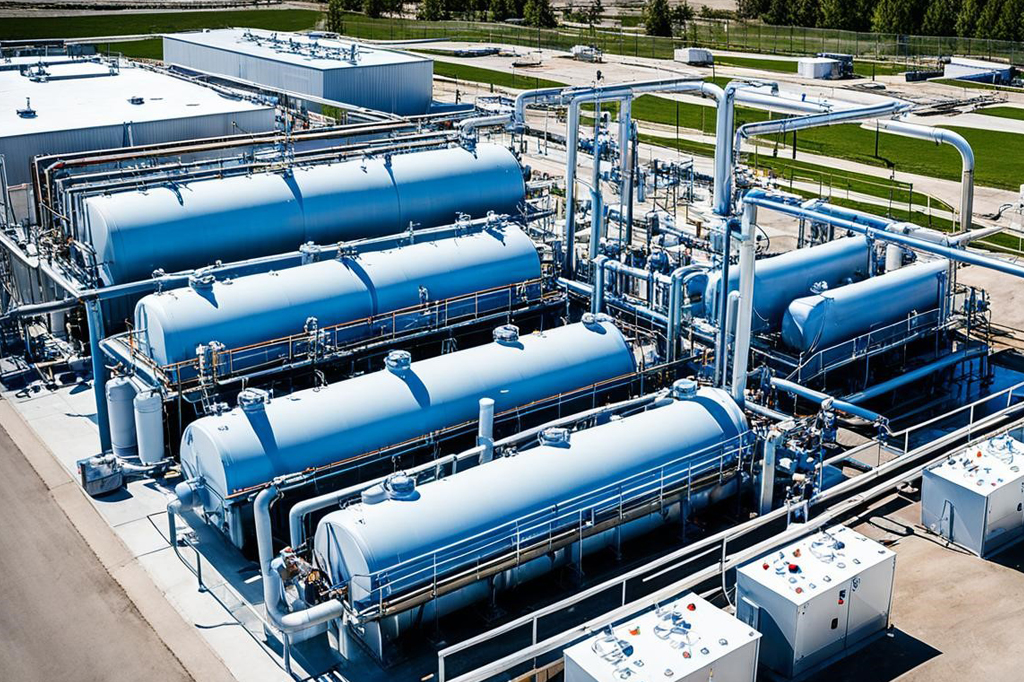Industrial Waste Water Treatment-- Cutting-Edge Technologies for Water Filtration
Industrial Waste Water Treatment-- Cutting-Edge Technologies for Water Filtration
Blog Article
Innovations and Developments in Industrial Waste Water Therapy Technologies
The landscape of industrial wastewater therapy is going through a transformative change, driven by advancements that enhance both effectiveness and sustainability. Arising innovations, such as membrane bioreactors and microbial gas cells, are redefining contaminant elimination processes while contributing to power generation. Additionally, source recuperation methods are obtaining traction, lining up with circular economy concepts. As governing criteria progress, the combination of AI and maker understanding right into wastewater management systems guarantees to make certain and streamline operations conformity. The full implications of these improvements raise crucial concerns regarding their scalability and long-lasting effect on sector techniques.
Introduction of Drainage Treatment Technologies
Wastewater treatment modern technologies incorporate a variety of approaches created to eliminate contaminants from industrial effluents prior to their launch into the environment. These modern technologies are vital for preserving ecological equilibrium and making certain conformity with environmental regulations. The main categories of wastewater therapy consist of physical, chemical, and organic methods, each offering unique purposes based upon the nature of the pollutants present.

Biological treatment techniques utilize microbes to degrade raw material, making them specifically efficient for organic-rich effluents. Methods like turned on sludge and biofilm activators harness the all-natural degradation capabilities of germs, causing substantial decreases in biochemical oxygen need (FIGURE)
Advanced Purification Techniques
Advanced filtration techniques represent a vital advancement in the world of commercial wastewater therapy, improving the effectiveness of impurity elimination procedures. Industrial Waste Water Treatment. These approaches incorporate a variety of modern technologies, consisting of microfiltration, ultrafiltration, nanofiltration, and turn around osmosis, which give consecutive barriers for different fragment dimensions and chemical frameworks
Microfiltration and ultrafiltration utilize membrane systems to eliminate suspended solids, bacteria, and larger organic molecules, boosting the top quality of effluent previous to additional treatment. Nanofiltration connects the gap in between ultrafiltration and turn around osmosis, successfully eliminating organic compounds and divalent ions, hence lowering the lots on downstream procedures.
Reverse osmosis supplies the highest degree of filtration by enabling only water and small molecules to go through its semi-permeable membrane layers, making it suitable for recovering top notch water from industrial effluents. Recent innovations in membrane layer technology, consisting of the growth of more fouling-resistant and sturdy materials, have actually dramatically enhanced operational effectiveness and decreased prices.
Including these sophisticated filtration methods not only improves the overall therapy procedure yet likewise adds to sustainability efforts by allowing water reuse and resource recuperation in industrial setups. (Industrial Waste Water Treatment)
Biological Therapy Innovations

Additionally, the growth of crafted biological systems, such as membrane layer bioreactors (MBRs), integrates biological therapy with sophisticated membrane layer filtering. This integration permits greater effluent high quality and reduced impact, making it suitable for space-constrained commercial facilities. Innovations in genetically crafted microorganisms have actually also arised, enhancing the biodegradation of details pollutants, such as pharmaceuticals and heavy steels, that are generally more info here testing to eliminate.
In addition, the application of bioaugmentation strategies, where helpful microbes are presented to boost the existing biological therapy processes, has actually shown appealing outcomes in improving therapy efficiency. These developments jointly signify a pattern in the direction of even more sustainable and reliable organic therapy approaches that can adjust to the evolving complexities of commercial wastewater streams. As sectors continue to prioritize ecological conformity, these biological advancements will certainly play a critical function in wastewater monitoring.

Resource Recuperation Techniques
In industrial setups, the integration of source recuperation methods has actually ended up being increasingly essential for improving sustainability and minimizing waste. These techniques focus on removing important products and energy you can find out more from wastewater streams, therefore transforming prospective contaminants right into multiple-use resources.
One popular technique is vitamins and mineral recuperation, where nitrogen and phosphorus, typically present over in wastewater, are recorded and transformed right into fertilizers. This not just reduces environmental effects but likewise gives a circular economy option for agricultural applications. Furthermore, modern technologies such as anaerobic digestion enable the conversion of natural waste into biogas, a renewable resource source that can balance out fossil gas usage in industrial operations.
Furthermore, progressed filtration and membrane innovations promote the recovery of industrial spin-offs such as steels and salts. These recovered materials can be reintegrated right into manufacturing processes, decreasing the need for virgin resources.
Future Patterns in Drainage Monitoring
As sectors increasingly prioritize sustainability, the future of wastewater management is set to go through considerable makeovers. Technical innovations, such as synthetic knowledge and equipment learning, will enable much more efficient monitoring and administration of wastewater systems. These innovations can anticipate maintenance needs, optimize treatment procedures, and boost decision-making, inevitably lowering functional expenses and environmental effect.
Furthermore, the integration of circular economy concepts will certainly play a critical duty in wastewater administration. Industries are anticipated to move towards systems that not only deal with wastewater yet likewise recuperate important resources, such as nutrients, water, and power. This shift will minimize waste and advertise the reuse of products, aligning with worldwide sustainability goals.
Emerging therapy methods, such as membrane bioreactors and progressed oxidation procedures, will better boost the efficiency of wastewater treatment, permitting for higher quality effluents ideal for reuse. Furthermore, regulatory structures are most likely to evolve, stressing stricter standards for wastewater discharge and motivating industries to take on ingenious therapy options.
Conclusion
In verdict, the development of commercial wastewater treatment technologies shows a significant change towards boosted efficiency and sustainability. Technologies in sophisticated purification techniques, organic treatments, and source recuperation techniques click resources highlight the sector's dedication to ecological stewardship. The integration of fabricated intelligence and maker learning additionally maximizes these processes, making certain regulatory compliance and advertising a round economic climate. Continued innovations in these areas will certainly play a crucial function fit the future of wastewater management and safeguarding essential water sources.
The landscape of commercial wastewater therapy is undergoing a transformative shift, driven by advancements that improve both effectiveness and sustainability.Wastewater therapy modern technologies incorporate an array of methods made to get rid of impurities from commercial effluents prior to their launch right into the atmosphere.Taking advantage of the power of organic procedures has actually led to substantial technologies in the therapy of commercial wastewater.Furthermore, the application of bioaugmentation methods, where helpful microorganisms are introduced to enhance the existing biological therapy procedures, has actually shown promising outcomes in enhancing therapy performance. These technologies jointly symbolize a pattern in the direction of even more effective and sustainable biological therapy techniques that can adapt to the developing complexities of commercial wastewater streams.
Report this page